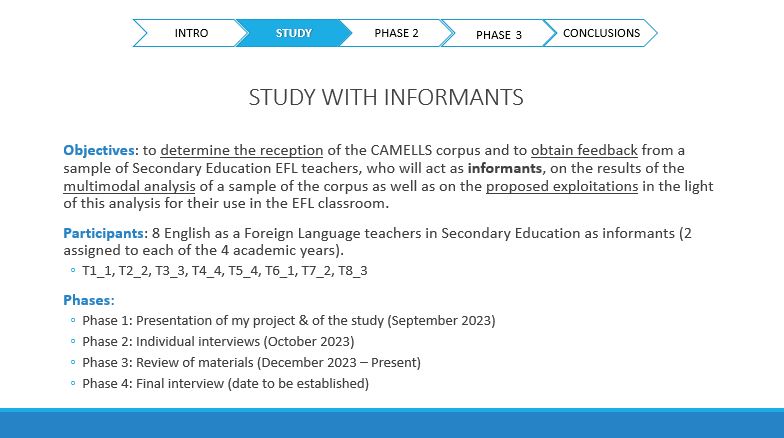AESLA 2024: Paula Wood-Borque presents a study of teachers’ perceptions on the use of films and series in the EFL classroom

Paula Wood-Borque presented a paper in this year’s edition of the International Conference of the Spanish Society for Applied Linguistics (AESLA), which took place at the Universitat Politècnica de València (Valencia, Spain) on the 17th-19th April 2024. In her talk, titled “Using audiovisual materials in the EFL classroom: A study of perceptions towards a multimodal corpus of films and series”, she presented a study carried out with EFL teachers acting as informants of her corpus CAMELLS and the materials for the EFL classroom she is developing from it. Paula Wood-Borque presented some results from the second phase of her study, which consisted of individual interviews with the informants about their perceptions on and experiences with the use of films and series in their EFL lessons, and explained how those informed the development of different materials for the 4 academic years of Secondary Education. Finally, she explored some of the informants’ opinions and suggestions on those materials.
The abstract of her talk can be consulted as follows:
USING AUDIOVISUAL MATERIALS IN THE EFL CLASSROOM: A STUDY OF PERCEPTIONS TOWARDS A MULTIMODAL CORPUS OF FILMS AND SERIES
Nowadays many teachers are resorting to audiovisual materials (AM) such as films and series in their English as a Foreign Language (EFL) lessons, mainly because of their benefits as a source of simulated naturalistic speech (Bednarek 2018). In addition, their multimodal nature can contribute to developing students’ multimodal communicative competence (Royce 2006, Ruiz-Madrid & Valeiras-Jurado 2020). For this, I am developing a corpus of scenes from films and series, named CAMELLS (Corpus of Audiovisual Materials for English Language Learning in Secondary), and creating materials drawing on the results of the multimodal discourse analysis (Norris 2019) of the scenes to be used in the EFL Secondary Education classroom. The main objective of this paper is to present a qualitative study carried out with 8 EFL teachers in different academic years of Secondary Education, which consisted of 4 stages: (1) A presentation of the study to the informants, (2) individual semi-structured interviews regarding their personal use of AM in their EFL lessons and the appropriateness of the materials in CAMELLS, (3) their evaluation of the materials and activities created for the 4 years of Secondary Education stemming from the analysis of CAMELLS, and (4) a final focus-group interview for final changes to the corpus and materials developed. The informants’ perceptions towards the use of films and series in the EFL classroom and the suitability of CAMELLS were overall positive, although they varied in relation to their contexts and preferred teaching methodologies. Regarding the materials created, it was claimed that even if potentially useful for developing students’ multimodal communicative competence, some scenes and activities could be challenging for lower-level students. It will be explored how these could be adapted in different ways.
